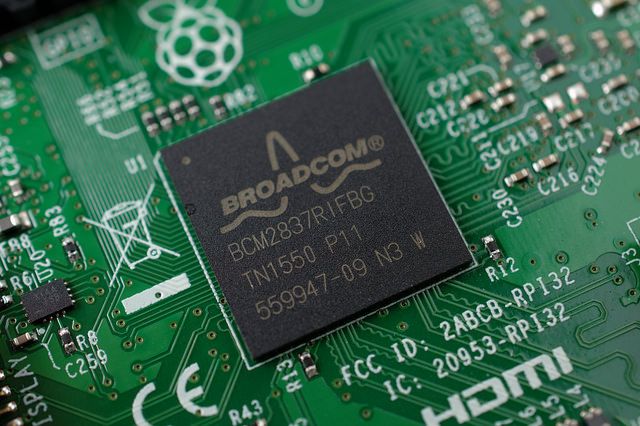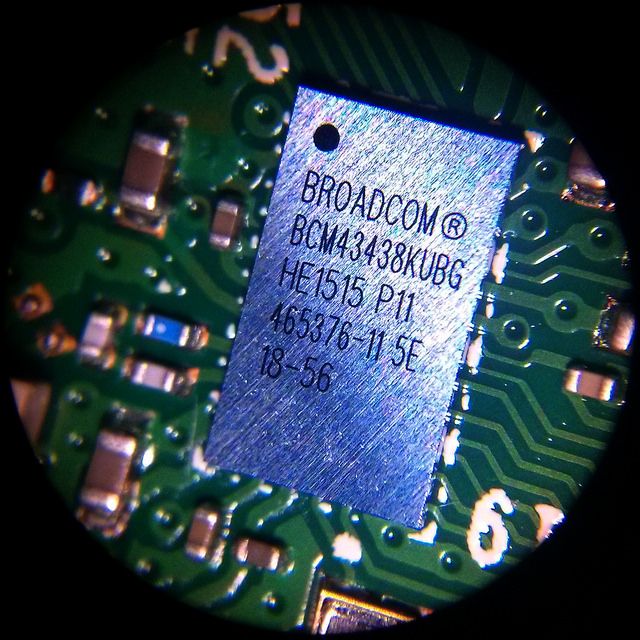The Raspberry Pi is going places, and I'm not just talking about outer space. In February 2016, the Raspberry Pi foundation announced the release of the Raspberry Pi 3. It was the most significant update to the popular line of low-cost computers yet.
Released just one year after the launch of the Raspberry Pi 2, it contains things that should have been included from the start, but weren't, like Bluetooth and Wi-Fi. Performance has also seen a significant bump. The Raspberry Pi 3 does this while keeping its bargain-basement price of $35. Here's what you need to know about it.
Performance
The Raspberry Pi 3 is powered by the BCM2837 - a brand new SoC (System on Chip) produced by Broadcom. This represents a significant improvement on earlier versions of the Raspberry Pi. Not only is it clocked at a higher rate (1.2GHZ quad core, compared to 900MHz quad core on the Raspberry Pi 2), but it runs the 64-bit ARM Cortex-A53 microarchitecture, which implements the more advanced ARMv8-A instruction set.
This translates into some impressive performance improvements, especially in real-world tasks like web browsing. Brian Benchoff, writing for Hackaday remarked:
"… the Pi 3 is now over a threshold where it becomes a useful desktop computer… This is a computer that could populate an entire elementary school computer lab. "
According to the Raspberry Pi foundation, the latest version represents a 50-60% increase in performance over the Raspberry Pi 2 in 32-bit mode. Incredibly, it's ten times faster than the original Raspberry Pi, which launched only four years ago.
Benchmarks produced by Pimoroni concluded that the Raspberry Pi 3 significantly surpasses the older models both single-core and multi-core tasks (a 35% and 48% improvement, respectively). The only let-down is boot times remain sluggish, due them being bottlenecked by slow I/O (input-output), rather than a slow CPU. Should a future version of the Raspberry Pi include fast onboard storage, you should expect to see boot times drop precipitously.
Another area of disappointment was the shortage of RAM, which is still limited to 1GB of LPDDR2 SDRAM. A boost in this area would go far to improving the Raspberry Pi's multitasking credentials.
Finally, the Raspberry Pi 3's GPU has also been boosted, making it better able to handle video content and games. The Broadcom VideoCore IV processor is now clocked at 400MHz for video processing, and 300MHz for 3D graphics. While you're still not going to be able to play Skyrim with this, you should expect to be able to watch HD content without any stuttering.
Connectivity
When it comes to wired connectivity, very little has changed. The Raspberry Pi 3 comes with onboard 10/100 Ethernet, a full-sized HDMI port, a combined 3.5 mm analog audio and composite video port, 4 USB 2.0 ports, CSI and DSI connectors, and 40 GPIO (General Purpose Input-Output) pins.
But now it also packs built-in Wi-Fi and Bluetooth connectivity, courtesy of the onboard BCM43438 wireless "combo" chip. This supports 802.11n wireless LAN, and the Bluetooth 4.1 standard, including Bluetooth LE (Bluetooth Low Energy). This is great news for a couple of reasons.
Firstly, it enhances the value proposition of the Raspberry Pi. A common complaint with the older Raspberry Pi machines was that although they only cost $30 to buy, you could easily spend more than that on the required accessories and components. You can now get a complete computer for $35, without having to spend any extra money on easily-misplaced dongles. Provided you have an old keyboard and mouse knocking about, you really don't have to buy anything else besides a Micro SD card.
The inclusion of onboard wireless connectivity will also free up some of the Raspberry Pi's valuable and scarce USB ports for more useful things.
But more excitingly, the Raspberry Pi 3 is a great out-of-the-box solution for anyone with an interest in robotics and the Internet of Things (IoT), as you can connect it to other devices and computers without any intermediate hardware.
No benchmarks have been produced for the Bluetooth connectivity yet, due to a lack of drivers available for the review models. However, early reviews of the Wi-Fi chip suggest it's on-par with most external dongles, with Pimoroni saying it is only 5% slower.
There is a downside though. Power consumption has soared with the addition BCM43438 chip. While you can still power it using a bog-standard 5V micro-USB adapter, the Raspberry Pi foundation recommends you use a 2.5A charger, particularly if you intend to connect power-hungry USB devices to it.
Look and Feel
At first glance, the Raspberry Pi retains much of the aesthetic of its earlier brethren, not including the Raspberry Pi Zero. But there are subtle design changes. To accommodate the Bluetooth and WiFi chip, LED's have had to be moved around. The run-header has shifted slightly too.
It remains to be seen how well earlier cases will fit the latest board. According to LifeHacker, all earlier cases will work with the new board, while some accessory manufacturers, like Pimoroni, have publicly stated they intend to release reworked cases designed for the Raspberry Pi 3.
Another significant improvement is found in the Micro SD slot. The Raspberry Pi 2 used a spring-loaded Micro SD slot, which was prone to breaking and ultimately became an area of complaint for Raspberry Pi owners. Some even resorted to homemade hacks, like covering their MicroSD slot with duct-tape, to prevent their storage media being prematurely ejected.
Thankfully, the Raspberry Pi 3 ditches the spring altogether, which we hope is a permanent change.
Another Great Raspberry Pi
If you've been holding out on getting a Raspberry Pi, now is your chance. In addition to being a great device for experimentation and learning to code, it's finally matured enough to be a halfway-decent day-to-day computer.
Of course, there are a few things that we'd still like to see in future versions of the board. Although we love the Wi-Fi, it's a shame it isn't the new 802.11ac standard, which is cropping up on more consumer-grade routers. We're still holding out for onboard storage too, as well as some extra RAM; and a Gigabit Ethernet connection would be much appreciated. But for $35, you're not going to hear us complaining.
The Raspberry Pi 3 is available to purchase now. At the time of writing, Element14 and RS Components have good availability. Although, if the runaway success of the Raspberry Pi Zero is anything to go by, don't expect this to be the case for long.
Will you be getting one? Are there any features you think it's missing? Let me know in the comments below.





